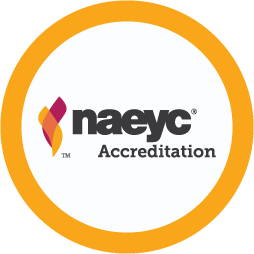7X. Supporting Staff Through Change

You are here
As a program leader, you know that managing change is a large part of your work. Change can be small or significant; it can be gradual or come swiftly. How much time do you spend intentionally thinking about the best way to navigate change? Much like a classroom teacher plans for transitions during the day, program leaders need to plan intentional strategies to support staff to understand, embrace, and work through change—daily and throughout the year. The following are seven ways that leaders can support change in their programs.
1. Name the change
The first step in managing change is to acknowledge it. Often, a leader’s initial reaction is to minimize change by avoiding talking about it or waiting to see if the issue resolves on its own. Instead, the more transparent you can be about a change—unexpected or planned—the more prepared your team will be when the actual change arrives.
2. Recognize that change is an emotional process
Not everyone deals with change in the same way, but everyone has a response. Thinking about some possible reactions will help you better prepare yourself to support staff members when emotions arise. Often, a person’s first reaction to change is to say no. The reason could be due to fear, confusion, or negative past experiences involving change. However, by being prepared for resistance and staying consistent with the message, most staff members can get to a place of acceptance.
3. Consider temperaments and personalities, and individualize your approach
Once you understand some common responses to change, it’s important to think about your specific team members. How might each person respond? This will allow you to connect with them intentionally. Remember that everyone deserves to have an opinion, even if you do not agree with it.
Just as you create an individualized curriculum for young children, you can also individualize your approach with adults. Offering support may be as simple as devoting extra time to help them understand the why. You might also give them room to share what they are afraid of and walk through some possible solutions together. Giving them space to have their feelings while providing a safe, nonjudgmental attitude is a gentle way to move them forward and will help you create buy-in.
4. Start in the middle
Invest your energy in getting the majority of your staff on board. Except for non-negotiable changes, such as cleaning regimens and licensing requirements, the goal is not necessarily 100 percent buy-in. What you need is a critical mass, or a group that agrees with you and is strong in both numbers and influence. With a critical mass, you can move forward—even if not everyone is on board with the change.
Some staff will give little pushback and will be ready to move forward when you introduce a change; others will live firmly in the space of no; everyone else will fall in the middle. Each of these groups will need a different level of support from you as the leader to move to yes. It may help to create a chart to see where individuals fall on a continuum. Once you know where everyone lands, you can create a plan to assist staff at each level and even leverage early adopters to connect with those who are still unsure.
5. Create an atmosphere that incentivizes the change
Incentives can look like money, but they can also look like attention and support. As an early childhood educator, you know that what you give attention to grows. Staff will notice when your attention and assistance go to those helping to move forward with change. Eventually, those who are reluctant will come on board.
As a director, I did this by creating voluntary communities of practice where educators could come together to learn and grow. I framed this as an invitation to “play.” Playing in this sense was about engaging with ideas and concepts that would move our work forward in exciting and innovative ways.
6. Don’t expect everyone to agree
Not everyone will come along on this journey with you. While this can be hard to accept, it will be harder to continue to push change on someone who is not willing or interested in it. When staff members make it clear that they are not coming with you on the road to change, it is important to continue to honor and celebrate what they have contributed while also being clear that the program is moving forward. If they are not willing to be a part of the change, you might need to help them find opportunities that better align with their values and desires.
7. Remember that the process of change is ongoing
The more practice you get managing this process, the easier it will be. When I began my career, I failed often. I did not always understand how to both support educators and help them move forward. But after 17 years of supporting and leading change, it has become easier because I have taken the lessons I learned and applied them. Be gentle with yourself and your team. Change is hard, but it can be done joyfully.
Further Resources
Here are four resources for early childhood program leaders to build a strong knowledge base as they work to implement change.
- From Survive to Thrive: A Director’s Guide for Leading an Early Learning Program, by Debbie LeeKeenan and Iris Chin Ponte, offers leadership approaches based on theory and practice and includes suggestions about how to address a host of issues, including change.
- Coaching with Powerful Interactions: A Guide for Partnering with Early Childhood Teachers, by Judy Jablon, Amy Laura Dombro, and Shaun Johnsen, provides guidance for program leaders to engage in productive interactions with staff that support positive relationships, professional development, and program-wide change.
- “Supporting Teachers Through Change” was featured in the Fall 2020 issue of Young Children, just as educators were adjusting to the reality of the COVID-19 pandemic. This resource provides a powerful example of educators making quick pivots during a challenging period for early learning programs and families.
- “Leadership Teams: Working with Consultants to Support Meaningful Change,” from the May 2015 issue of Young Children, invites program leaders to consider external supports when implementing change in their programs.
Photograph: © Getty Images
Copyright © 2023 by the National Association for the Education of Young Children. See permissions and reprints online at NAEYC.org/resources/permissions.
 This article supports the following NAEYC Early Learning Programs standards and topics
This article supports the following NAEYC Early Learning Programs standards and topics
Standard 6: Staff Competencies, Preparation, and Support
6D: Ongoing Professional Development
Standard 10: Leadership and Management
10B: Management Policies and Procedures
10F: Personnel Policies
Alissa Mwenelupembe is the managing director, early learning at NAEYC and works out of the DC headquarters.